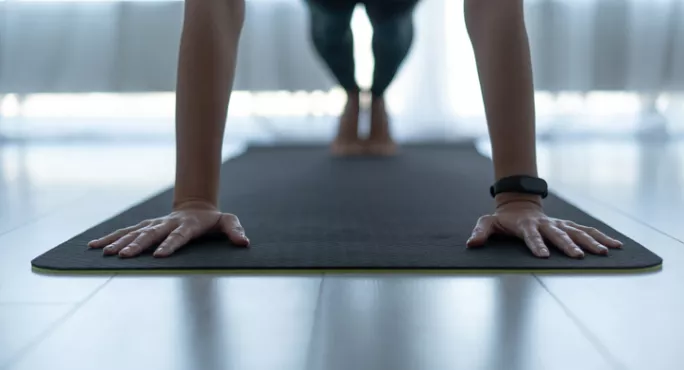- Home
- WATCH: How to teach sport and coaching remotely
WATCH: How to teach sport and coaching remotely

As the impact of Covid-19 loomed upon us at Coventry College and college closure was announced, I, alongside others in my department, decided to turn the closures into a new learning experience and take all of my learning online.
I teach BTEC sport and vocational sports studies at Coventry College and, as part of this, I run the coaching and strength and conditioning training for the college’s rugby academy. It’s easy enough to see how traditional subjects could work remotely, but when it comes to sports coaching, not being physically with the students presents a real challenge.
More: How to teach beauty therapy remotely
News: Ask Gillian Keegan: What do you want to know?
Opinion: GCSEs are cancelled - so what's next?
But it’s one we rose to and we quickly moved all resources, vocational lessons, strength and conditioning programming and chats to online formats with the use of Microsoft Teams messenger groups, video analysis, video coaching and online meetings.
The culture we promote and strive for within the rugby academy is high-quality teaching and learning from staff and students at all times. It was crucial to us that moving the rugby academy content to a remote set-up and working from home did not result in any standards slipping. And actually, as soon as we found all the appropriate formats in order to achieve the quality of content and delivery we were all happy with, we ran with it, and now find ourselves within a consistent online teaching routine.
I’ve been running two different timetables and ways of working: one for the vocational lessons I normally teach and one for the coaching, strength and conditioning course.
So how do they work?
Vocational lessons
- Learners are set up in messenger groups on Microsoft Teams in which I contact them daily. In these groups, I post deadlines, meeting times and ask any questions I may have of the class.
- Zoom meetings are scheduled in relation to college timetables.
- Within the zoom video group sessions, I always screen share to enhance the visual learning progression and demonstrate live any practical or written activities as needed.
- During these lessons, I ask learners to reply with emojis to check if they are keeping up with the learning, they can send a thumbs up if they are happy and ready to move on, or a thumbs down if they need more time. I also verbally ask them if they’ve got any questions and don’t move on to the next part of the lesson until they’ve all confirmed they understand and are happy.
- If any learner is reluctant to ask questions during the live lesson, I ask them to stay on the session after the others have signed off to raise any concerns and I go over any sections they’ve struggled with again.
- I also send the group a video analysis of fixtures that we played previously in the year with individual and group feedback on.
- One-to-one tutorials are scheduled either every week or every two weeks via Zoom for feedback on assignments, progress tracking, talking about any issues or barriers to learning they may have and addressing motivation techniques.
- We operate a booking in-system for any questions or teaching that need to take place outside of timetabled lesson hours available.
- I send out a progress tracker on a weekly basis with colour coding to support learners with a visual and a clear outlook on what they have submitted, not submitted, grades achieved, not achieved.
Coaching, strength and conditioning
- The learners are set up in a Microsoft Teams messenger group and on this I sent a five-week programme along with some silent video demonstrations of me performing the exercises for any coaching points to help perform the exercises correctly as good learning visuals.
- On the messenger group, they are also sent daily conditioning workouts to help them maintain fitness levels. These videos often trigger questions and comments and I reply to them all.
- All learners are required to submit a 10-second clip to the strength and conditioning messenger group of them performing an exercise within each workout session for group accountability and recognition that everyone is staying on top of their strength and conditioning along with a rating of how intense they found the session. Obviously, students are restricted by the space they have at home and a lack of gym equipment, which is why I set exercises that can be completed in a small space and using furniture everyone will have like a sofa or a chair.
Overall, the feedback from the learners and other lecturers within the programme has been positive. Unfortunately, we can’t deliver our field-based rugby sessions but we have worked hard in maintaining the engagement factor as well as keeping our content and delivery standards as high as possible.
Joe Foreman is a lecturer, rugby and strength and conditioning coach at Coventry College Rugby Academy
Keep reading for just £1 per month
You've reached your limit of free articles this month. Subscribe for £1 per month for three months and get:
- Unlimited access to all Tes magazine content
- Exclusive subscriber-only stories
- Award-winning email newsletters